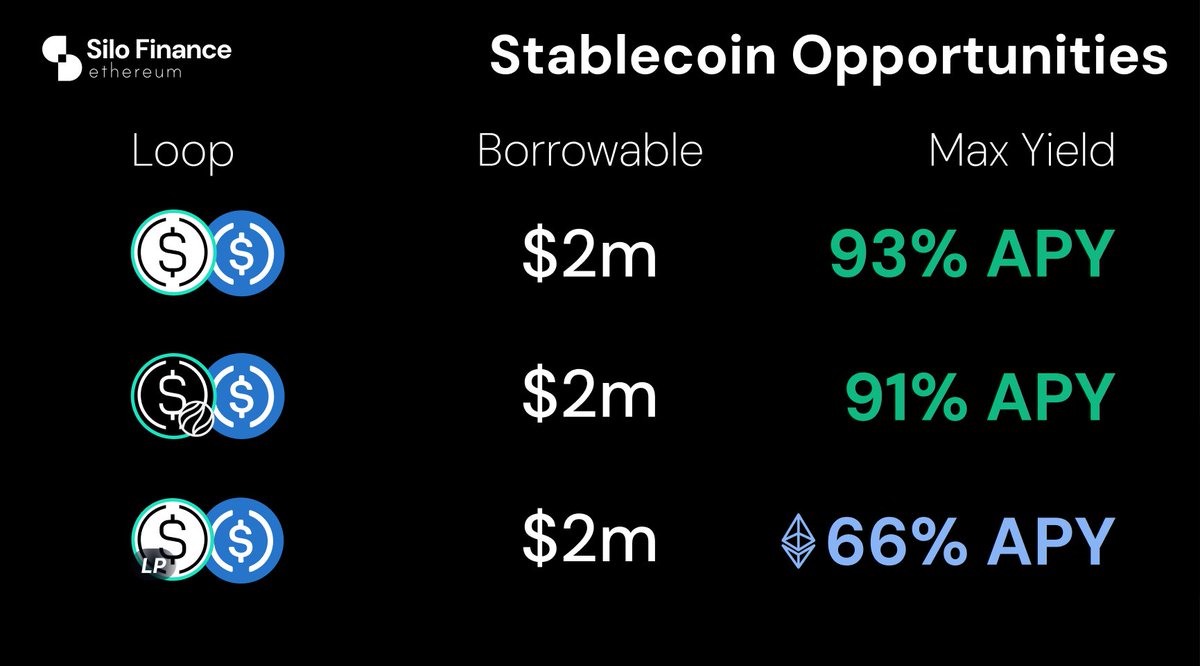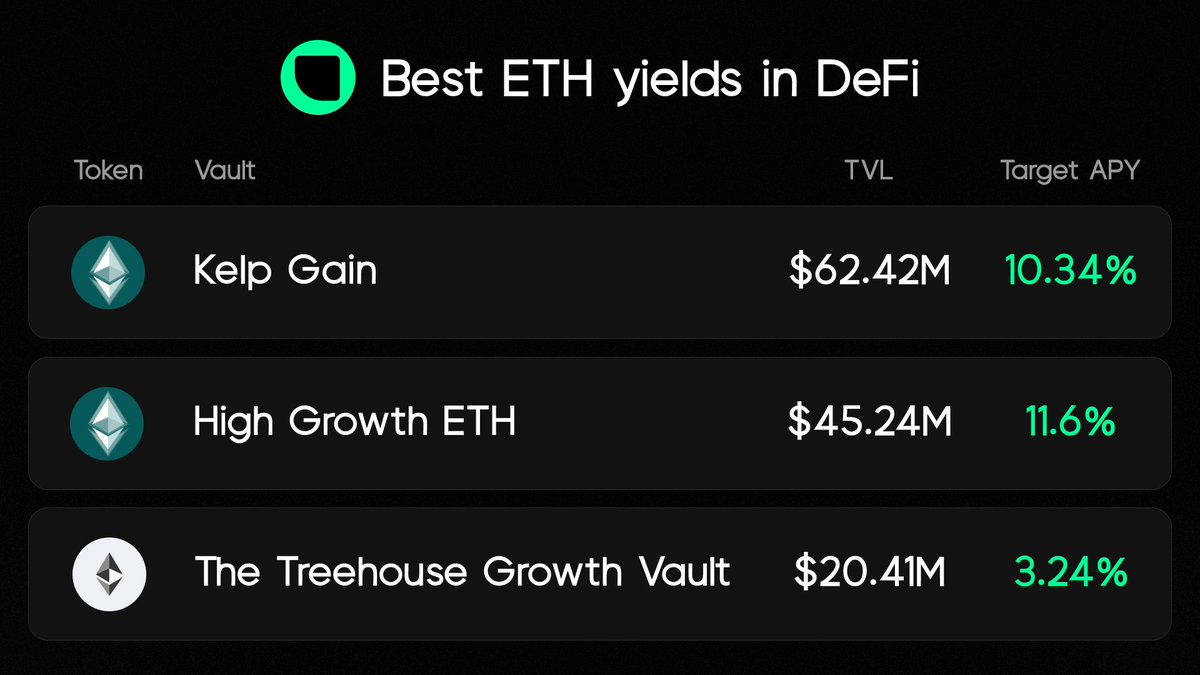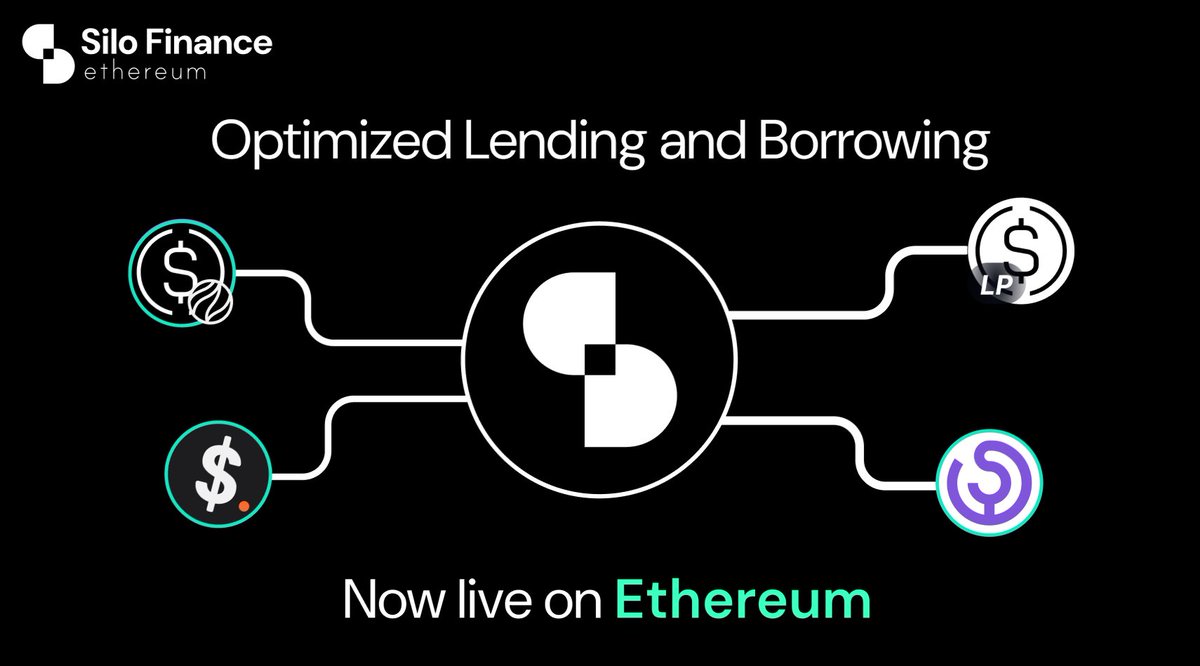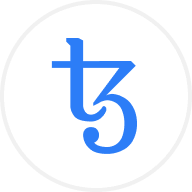
PENDLE
Pendle价格
$3.2680
-$0.23600
(-6.74%)
过去 24 小时的价格变化

您认为 PENDLE 今天会涨还是会跌?
您可以点赞或点踩来表达对该币种今日涨跌的预测
投票并查看结果
PENDLE 发行人风险
请采取一切预防措施,并注意此加密资产被归类为高风险加密资产。此加密资产缺乏明确可识别的发行人或/和成熟的项目方,这会增加或可能增加其面临重大市场风险的可能性,包括但不限于极端波动性、低流动性或/和市场滥用或价格操纵的可能性。无法绝对保证此加密资产的价值、稳定性或以优惠或理想价格出售的能力。
免责声明
本页面的社交内容 (包括由 LunarCrush 提供支持的推文和社交统计数据) 均来自第三方,并按“原样”提供,仅供参考。本文内容不代表对任何数字货币或投资的认可或推荐,也未获得欧易授权或撰写,也不代表我们的观点。我们不保证所显示的用户生成内容的准确性或可靠性。本文不应被解释为财务或投资建议。在做出投资决策之前,评估您的投资经验、财务状况、投资目标和风险承受能力并咨询独立财务顾问至关重要。过去的表现并不代表未来的结果。您的投资价值可能会波动,您可能无法收回您投资的金额。您对自己的投资选择自行承担全部责任,我们对因使用本信息而造成的任何损失或损害不承担任何责任。提供外部网站链接是为了用户方便,并不意味着对其内容的认可或控制。
请参阅我们的 使用条款 和 风险警告,了解更多详情。通过使用第三方网站(“第三方网站”),您同意对第三方网站的任何使用均受第三方网站条款的约束和管辖。除非书面明确说明,否则欧易及其关联方(“OKX”)与第三方网站的所有者或运营商没有任何关联。您同意欧易对您使用第三方网站而产生的任何损失、损害和任何其他后果不承担任何责任。请注意,使用第三方网站可能会导致您的资产损失或贬值。本产品可能无法在所有司法管辖区提供或适用。
请参阅我们的 使用条款 和 风险警告,了解更多详情。通过使用第三方网站(“第三方网站”),您同意对第三方网站的任何使用均受第三方网站条款的约束和管辖。除非书面明确说明,否则欧易及其关联方(“OKX”)与第三方网站的所有者或运营商没有任何关联。您同意欧易对您使用第三方网站而产生的任何损失、损害和任何其他后果不承担任何责任。请注意,使用第三方网站可能会导致您的资产损失或贬值。本产品可能无法在所有司法管辖区提供或适用。
Pendle 市场信息
市值
市值是通过流通总应量与最新价格相乘进行计算。市值 = 当前流通量 × 最新价
流通总量
目前该代币在市场流通的数量
市值排行
该资产的市值排名
历史最高价
该代币在交易历史中的最高价格
历史最低价
该代币在交易历史中的最低价格
24 小时最高
$3.5430
24 小时最低
$3.1040
历史最高价
$7.1420
-54.25% (-$3.8740)
最后更新日期:2024年12月7日 (UTC+8)
历史最低价
$1.8130
+80.25% (+$1.4550)
最后更新日期:2025年3月11日 (UTC+8)
Pendle 动态资讯
以下内容源自 。

🎱
什么时候会有收益代币?
3个月前你说我们想要推出
现在快3个月了,什么都没有展示??你们甚至在瞄准2025年推出吗??

DeFi Devin
收益代币已在测试网上线 @GammaSwapLabs,我们非常接近在主网上的初始部署
我们原本想几个月前上线,但收益代币是一种非常复杂的策略。我们意识到需要进行更多测试,以确保策略适合初始部署(安全第一!)
以下是达到 10 亿美元 TVL 的计划
📌 初步在 Base 上推出 ETH 的收益代币
📌 支持其他资产并更深入地与生态系统集成(Aerodrome、Pendle 等)
📌 将收益代币策略扩展到其他链(Sonic、Arbitrum、Ethereum + ???)
📌 收集更多数据并随着时间的推移提高资本效率以增加 APY(更紧的范围,V2 以降低对冲成本等)。这将帮助收益代币扩展到难以置信的高度。
GammaSwap 是不可否认的。团队是最强的,@0x_danr 是我个人认识的最聪明的超级大佬。产品引领着新兴类别。我们不会满足,直到我们再次让流动性变得伟大。

1,470
1
PENDLE 计算器


Pendle 价格表现 (美元)
Pendle 当前价格为 $3.2680。Pendle 的价格在过去 24 小时内下跌了 -6.74%。目前,Pendle 市值排名为第 0 名,实时市值为 $5.32亿,流通供应量为 162,898,483 PENDLE,最大供应量为 281,527,448 PENDLE。我们会实时更新 Pendle/USD 的价格。
今日
-$0.23600
-6.74%
7 天
-$0.48800
-13.00%
30 天
-$1.0330
-24.02%
3 个月
+$0.33000
+11.23%
关于 Pendle (PENDLE)
此评级是欧易从不同来源收集的汇总评级,仅供一般参考。欧易不保证评级的质量或准确性。欧易无意提供 (i) 投资建议或推荐;(ii) 购买、出售或持有数字资产的要约或招揽;(iii) 财务、会计、法律或税务建议。包括稳定币和 NFT 的数字资产容易受到市场波动的影响,风险较高,波动较大,可能会贬值甚至变得一文不值。数字资产的价格和性能不受保证,且可能会发生变化,恕不另行通知。您的数字资产不受潜在损失保险的保障。 历史回报并不代表未来回报。欧易不保证任何回报、本金或利息的偿还。欧易不提供投资或资产建议。您应该根据自身的财务状况仔细考虑交易或持有数字资产是否适合您。具体情况请咨询您的专业法务、税务或投资人士。
展开更多
- 官网
- 白皮书
- Github
- 区块浏览器
关于第三方网站
关于第三方网站
通过使用第三方网站(“第三方网站”),您同意对第三方网站的任何使用均受第三方网站条款的约束和管辖。除非书面明确说明,否则 OKX 及其关联方(“OKX”)与第三方网站的所有者或运营商没有任何关联。您同意 OKX 对您使用第三方网站而产生的任何损失、损害和任何其他后果不承担任何责任。请注意,使用第三方网站可能会导致您的资产损失或贬值。
Pendle 常见问题
Pendle 今天值多少钱?
目前,一个 Pendle 价值是 $3.2680。如果您想要了解 Pendle 价格走势与行情洞察,那么这里就是您的最佳选择。在欧易探索最新的 Pendle 图表,进行专业交易。
数字货币是什么?
数字货币,例如 Pendle 是在称为区块链的公共分类账上运行的数字资产。了解有关欧易上提供的数字货币和代币及其不同属性的更多信息,其中包括实时价格和实时图表。
数字货币是什么时候开始的?
由于 2008 年金融危机,人们对去中心化金融的兴趣激增。比特币作为去中心化网络上的安全数字资产提供了一种新颖的解决方案。从那时起,许多其他代币 (例如 Pendle) 也诞生了。
Pendle 的价格今天会涨吗?
查看 Pendle 价格预测页面,预测未来价格,帮助您设定价格目标。
ESG 披露
ESG (环境、社会和治理) 法规针对数字资产,旨在应对其环境影响 (如高能耗挖矿)、提升透明度,并确保合规的治理实践。使数字代币行业与更广泛的可持续发展和社会目标保持一致。这些法规鼓励遵循相关标准,以降低风险并提高数字资产的可信度。
资产详情
名称
OKcoin Europe LTD
相关法人机构识别编码
54930069NLWEIGLHXU42
代币名称
Pendle
共识机制
Pendle is present on the following networks: Arbitrum, Binance Smart Chain, Ethereum.
Arbitrum is a Layer 2 solution on top of Ethereum that uses Optimistic Rollups to enhance scalability and reduce transaction costs. It assumes that transactions are valid by default and only verifies them if there's a challenge (optimistic): Core Components: • Sequencer: Orders transactions and creates batches for processing. • Bridge: Facilitates asset transfers between Arbitrum and Ethereum. • Fraud Proofs: Protect against invalid transactions through an interactive verification process. Verification Process: 1. Transaction Submission: Users submit transactions to the Arbitrum Sequencer, which orders and batches them. 2. State Commitment: These batches are submitted to Ethereum with a state commitment. 3. Challenge Period: Validators have a specific period to challenge the state if they suspect fraud. 4. Dispute Resolution: If a challenge occurs, the dispute is resolved through an iterative process to identify the fraudulent transaction. The final operation is executed on Ethereum to determine the correct state. 5. Rollback and Penalties: If fraud is proven, the state is rolled back, and the dishonest party is penalized. Security and Efficiency: The combination of the Sequencer, bridge, and interactive fraud proofs ensures that the system remains secure and efficient. By minimizing on-chain data and leveraging off-chain computations, Arbitrum can provide high throughput and low fees.
Binance Smart Chain (BSC) uses a hybrid consensus mechanism called Proof of Staked Authority (PoSA), which combines elements of Delegated Proof of Stake (DPoS) and Proof of Authority (PoA). This method ensures fast block times and low fees while maintaining a level of decentralization and security. Core Components 1. Validators (so-called “Cabinet Members”): Validators on BSC are responsible for producing new blocks, validating transactions, and maintaining the network’s security. To become a validator, an entity must stake a significant amount of BNB (Binance Coin). Validators are selected through staking and voting by token holders. There are 21 active validators at any given time, rotating to ensure decentralization and security. 2. Delegators: Token holders who do not wish to run validator nodes can delegate their BNB tokens to validators. This delegation helps validators increase their stake and improves their chances of being selected to produce blocks. Delegators earn a share of the rewards that validators receive, incentivizing broad participation in network security. 3. Candidates: Candidates are nodes that have staked the required amount of BNB and are in the pool waiting to become validators. They are essentially potential validators who are not currently active but can be elected to the validator set through community voting. Candidates play a crucial role in ensuring there is always a sufficient pool of nodes ready to take on validation tasks, thus maintaining network resilience and decentralization. Consensus Process 4. Validator Selection: Validators are chosen based on the amount of BNB staked and votes received from delegators. The more BNB staked and votes received, the higher the chance of being selected to validate transactions and produce new blocks. The selection process involves both the current validators and the pool of candidates, ensuring a dynamic and secure rotation of nodes. 5. Block Production: The selected validators take turns producing blocks in a PoA-like manner, ensuring that blocks are generated quickly and efficiently. Validators validate transactions, add them to new blocks, and broadcast these blocks to the network. 6. Transaction Finality: BSC achieves fast block times of around 3 seconds and quick transaction finality. This is achieved through the efficient PoSA mechanism that allows validators to rapidly reach consensus. Security and Economic Incentives 7. Staking: Validators are required to stake a substantial amount of BNB, which acts as collateral to ensure their honest behavior. This staked amount can be slashed if validators act maliciously. Staking incentivizes validators to act in the network's best interest to avoid losing their staked BNB. 8. Delegation and Rewards: Delegators earn rewards proportional to their stake in validators. This incentivizes them to choose reliable validators and participate in the network’s security. Validators and delegators share transaction fees as rewards, which provides continuous economic incentives to maintain network security and performance. 9. Transaction Fees: BSC employs low transaction fees, paid in BNB, making it cost-effective for users. These fees are collected by validators as part of their rewards, further incentivizing them to validate transactions accurately and efficiently.
The crypto-asset's Proof-of-Stake (PoS) consensus mechanism, introduced with The Merge in 2022, replaces mining with validator staking. Validators must stake at least 32 ETH every block a validator is randomly chosen to propose the next block. Once proposed the other validators verify the blocks integrity. The network operates on a slot and epoch system, where a new block is proposed every 12 seconds, and finalization occurs after two epochs (~12.8 minutes) using Casper-FFG. The Beacon Chain coordinates validators, while the fork-choice rule (LMD-GHOST) ensures the chain follows the heaviest accumulated validator votes. Validators earn rewards for proposing and verifying blocks, but face slashing for malicious behavior or inactivity. PoS aims to improve energy efficiency, security, and scalability, with future upgrades like Proto-Danksharding enhancing transaction efficiency.
奖励机制与相应费用
Pendle is present on the following networks: Arbitrum, Binance Smart Chain, Ethereum.
Arbitrum One, a Layer 2 scaling solution for Ethereum, employs several incentive mechanisms to ensure the security and integrity of transactions on its network. The key mechanisms include: 1. Validators and Sequencers: o Sequencers are responsible for ordering transactions and creating batches that are processed off-chain. They play a critical role in maintaining the efficiency and throughput of the network. o Validators monitor the sequencers' actions and ensure that transactions are processed correctly. Validators verify the state transitions and ensure that no invalid transactions are included in the batches. 2. Fraud Proofs: o Assumption of Validity: Transactions processed off-chain are assumed to be valid. This allows for quick transaction finality and high throughput. o Challenge Period: There is a predefined period during which anyone can challenge the validity of a transaction by submitting a fraud proof. This mechanism acts as a deterrent against malicious behavior. o Dispute Resolution: If a challenge is raised, an interactive verification process is initiated to pinpoint the exact step where fraud occurred. If the challenge is valid, the fraudulent transaction is reverted, and the dishonest actor is penalized. 3. Economic Incentives: o Rewards for Honest Behavior: Participants in the network, such as validators and sequencers, are incentivized through rewards for performing their duties honestly and efficiently. These rewards come from transaction fees and potentially other protocol incentives. o Penalties for Malicious Behavior: Participants who engage in dishonest behavior or submit invalid transactions are penalized. This can include slashing of staked tokens or other forms of economic penalties, which serve to discourage malicious actions. Fees on the Arbitrum One Blockchain 1. Transaction Fees: o Layer 2 Fees: Users pay fees for transactions processed on the Layer 2 network. These fees are typically lower than Ethereum mainnet fees due to the reduced computational load on the main chain. o Arbitrum Transaction Fee: A fee is charged for each transaction processed by the sequencer. This fee covers the cost of processing the transaction and ensuring its inclusion in a batch. 2. L1 Data Fees: o Posting Batches to Ethereum: Periodically, the state updates from the Layer 2 transactions are posted to the Ethereum mainnet as calldata. This involves a fee, known as the L1 data fee, which accounts for the gas required to publish these state updates on Ethereum. o Cost Sharing: Because transactions are batched, the fixed costs of posting state updates to Ethereum are spread across multiple transactions, making it more cost-effective for users.
Binance Smart Chain (BSC) uses the Proof of Staked Authority (PoSA) consensus mechanism to ensure network security and incentivize participation from validators and delegators. Incentive Mechanisms 1. Validators: Staking Rewards: Validators must stake a significant amount of BNB to participate in the consensus process. They earn rewards in the form of transaction fees and block rewards. Selection Process: Validators are selected based on the amount of BNB staked and the votes received from delegators. The more BNB staked and votes received, the higher the chances of being selected to validate transactions and produce new blocks. 2. Delegators: Delegated Staking: Token holders can delegate their BNB to validators. This delegation increases the validator's total stake and improves their chances of being selected to produce blocks. Shared Rewards: Delegators earn a portion of the rewards that validators receive. This incentivizes token holders to participate in the network’s security and decentralization by choosing reliable validators. 3. Candidates: Pool of Potential Validators: Candidates are nodes that have staked the required amount of BNB and are waiting to become active validators. They ensure that there is always a sufficient pool of nodes ready to take on validation tasks, maintaining network resilience. 4. Economic Security: Slashing: Validators can be penalized for malicious behavior or failure to perform their duties. Penalties include slashing a portion of their staked tokens, ensuring that validators act in the best interest of the network. Opportunity Cost: Staking requires validators and delegators to lock up their BNB tokens, providing an economic incentive to act honestly to avoid losing their staked assets. Fees on the Binance Smart Chain 5. Transaction Fees: Low Fees: BSC is known for its low transaction fees compared to other blockchain networks. These fees are paid in BNB and are essential for maintaining network operations and compensating validators. Dynamic Fee Structure: Transaction fees can vary based on network congestion and the complexity of the transactions. However, BSC ensures that fees remain significantly lower than those on the Ethereum mainnet. 6. Block Rewards: Incentivizing Validators: Validators earn block rewards in addition to transaction fees. These rewards are distributed to validators for their role in maintaining the network and processing transactions. 7. Cross-Chain Fees: Interoperability Costs: BSC supports cross-chain compatibility, allowing assets to be transferred between Binance Chain and Binance Smart Chain. These cross-chain operations incur minimal fees, facilitating seamless asset transfers and improving user experience. 8. Smart Contract Fees: Deployment and Execution Costs: Deploying and interacting with smart contracts on BSC involves paying fees based on the computational resources required. These fees are also paid in BNB and are designed to be cost-effective, encouraging developers to build on the BSC platform.
The crypto-asset's PoS system secures transactions through validator incentives and economic penalties. Validators stake at least 32 ETH and earn rewards for proposing blocks, attesting to valid ones, and participating in sync committees. Rewards are paid in newly issued ETH and transaction fees. Under EIP-1559, transaction fees consist of a base fee, which is burned to reduce supply, and an optional priority fee (tip) paid to validators. Validators face slashing if they act maliciously and incur penalties for inactivity. This system aims to increase security by aligning incentives while making the crypto-asset's fee structure more predictable and deflationary during high network activity.
信息披露时间段的开始日期
2024-06-14
信息披露时间段的结束日期
2025-06-14
能源报告
能源消耗
3640.76160 (kWh/a)
能源消耗来源与评估体系
The energy consumption of this asset is aggregated across multiple components:
To determine the energy consumption of a token, the energy consumption of the network(s) arbitrum, binance_smart_chain, ethereum is calculated first. For the energy consumption of the token, a fraction of the energy consumption of the network is attributed to the token, which is determined based on the activity of the crypto-asset within the network. When calculating the energy consumption, the Functionally Fungible Group Digital Token Identifier (FFG DTI) is used - if available - to determine all implementations of the asset in scope. The mappings are updated regularly, based on data of the Digital Token Identifier Foundation.
PENDLE 计算器

























社媒平台热度